Trip Report - Glacial Hills Scenic Byway
30/01/21 11:35

On a cloudy and cold winter Sunday, I took a solo trip on the Glacial Hills Scenic Byway in northeastern Kansas. It was a fun and educational drive.
The Glacial Hills Scenic Byway gets its name from the rolling hills and rock-strewn valleys carved by ancient glaciers that once covered the northeastern part of Kansas. The receding ice left a beautiful landscape of fertile farmland and rivers. This area was one of the earliest settled by farmers prior to statehood, and was visited by Abraham Lincoln on his pre-election campaign trip. Lewis and Clark also travelled through this area on they way to the northwest Pacific coast.
Description of the Byway
From the TravelKS site:
The Glacial Hills Scenic Byway gets its name from the rolling hills and rock-strewn valleys carved by ancient glaciers. The receding ice left behind a beautiful landscape and highly fertile farmland. On July 4, 1804, the Lewis and Clark Expedition celebrated the first Independence Day of their journey near what is now Atchison. Fifty years later, the Kansas-Nebraska Act opened the Kansas Territory and settlers were drawn to the area's rich soil and nearby rivers.
The Glacial Hills region also includes one of the most famous Pony Express routes as well as Fort Leavenworth, the oldest Army post in continuous existence west of the Missouri River. Abraham Lincoln delivered one of his most famous campaign speeches in the area in 1859, and years later people would watch Atchison resident Amelia Earhart grow up to be a renowned aviator.
Informative Links
Legends of America - Nice write up of the Byway and Places to Visit
Travel Kansas - Kansas Byways - 'official' byway site
Glacial Hills Video - by Visit Leavenworth Kansas
Leavenworth
I started my trip by talking Highway 5 north along the Missouri River from Kansas City to Leavenworth. Highway 5 is a pleasant drive, tree-lined and twisty, with vestiges of the old Military road that preceded the modern highway.On the southern outskirts of the city, I visited the Leavenworth National Cemetery. The cemetery was originally part of a Delaware Indian Reservation. The first interment was made in 1886. The military burial ground became part of the national cemetery system in 1930, Over 31,000 military personnel are interred at the cemetery.
Entrance to the National Cemetery at Leavenworth
As I drove through the cemetery, my eye caught a gravestone that was slightly different than the surrounding tablets. It it honored John Gray, recipient of the Medal of Honor. John Gray was boorn in 1936 in Dundee, Scotland. He moved to Cincinnati, Ohio and served in the 5th Ohio Infantry during the Civil War. According to on-line records, Gray was presented the citation for "extraordinary heroism on June 9, 1962, while serving in Company B, in action at Port Republic, Virginia. Private Gray mounted an artillery horse of the enemy and captured a brass 6-pound piece in the face of enemy fire and brought it to the rear." Gray is one of six Medal of Honor recipients buried at the Leavenworth National Cemetery. Rest in Peace, Pvt. Gray!
Gravestone of John Gray - Medal of Honor Recipient (Civil War)
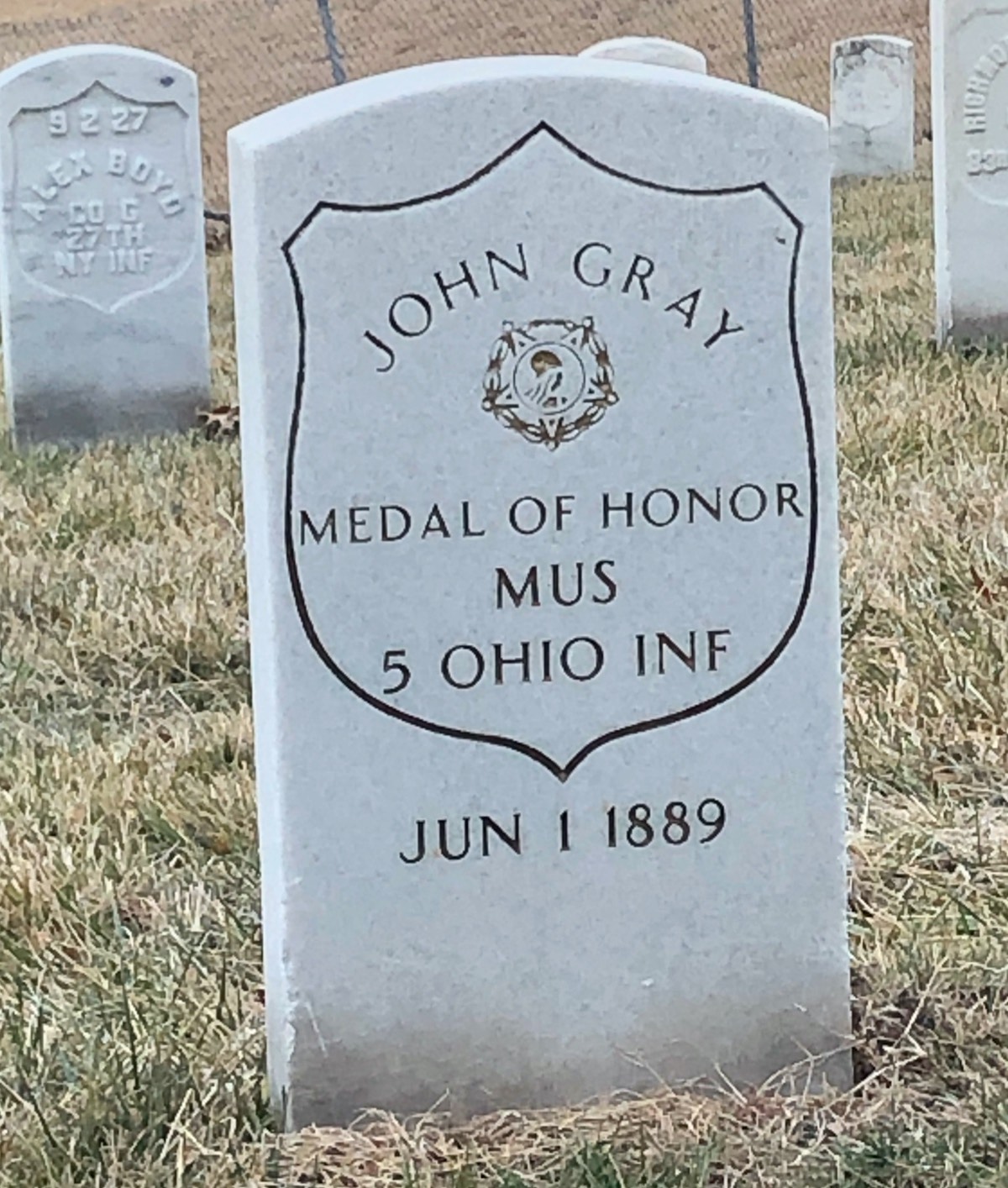
Monument to the Branches of the Armed Services
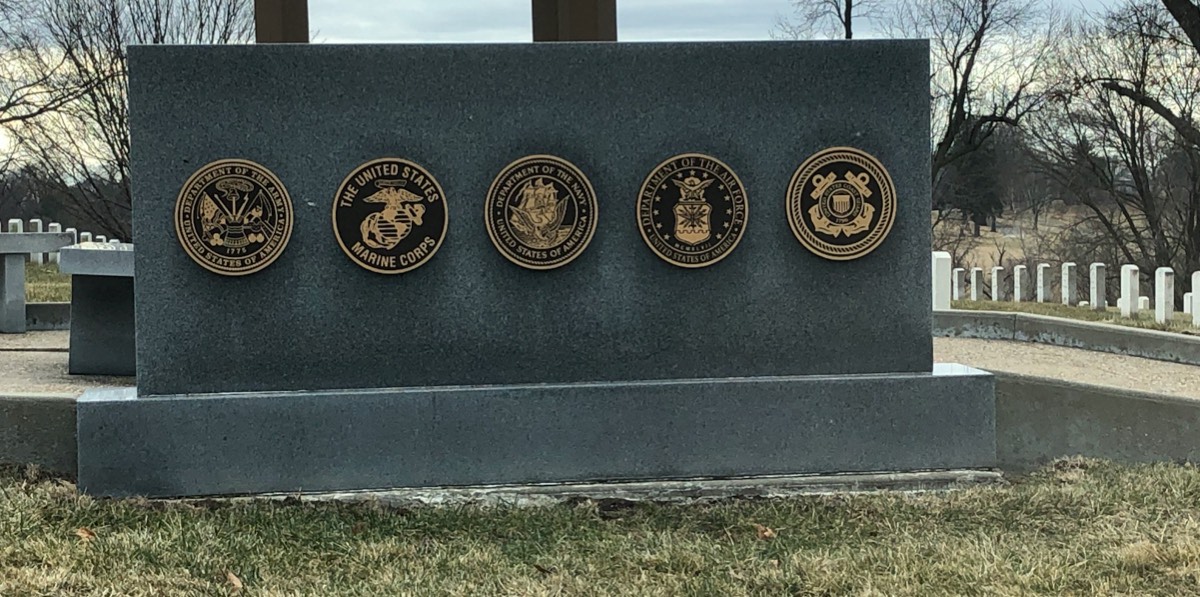
"Battle Cross" Memorial at the cemetery visitor's center
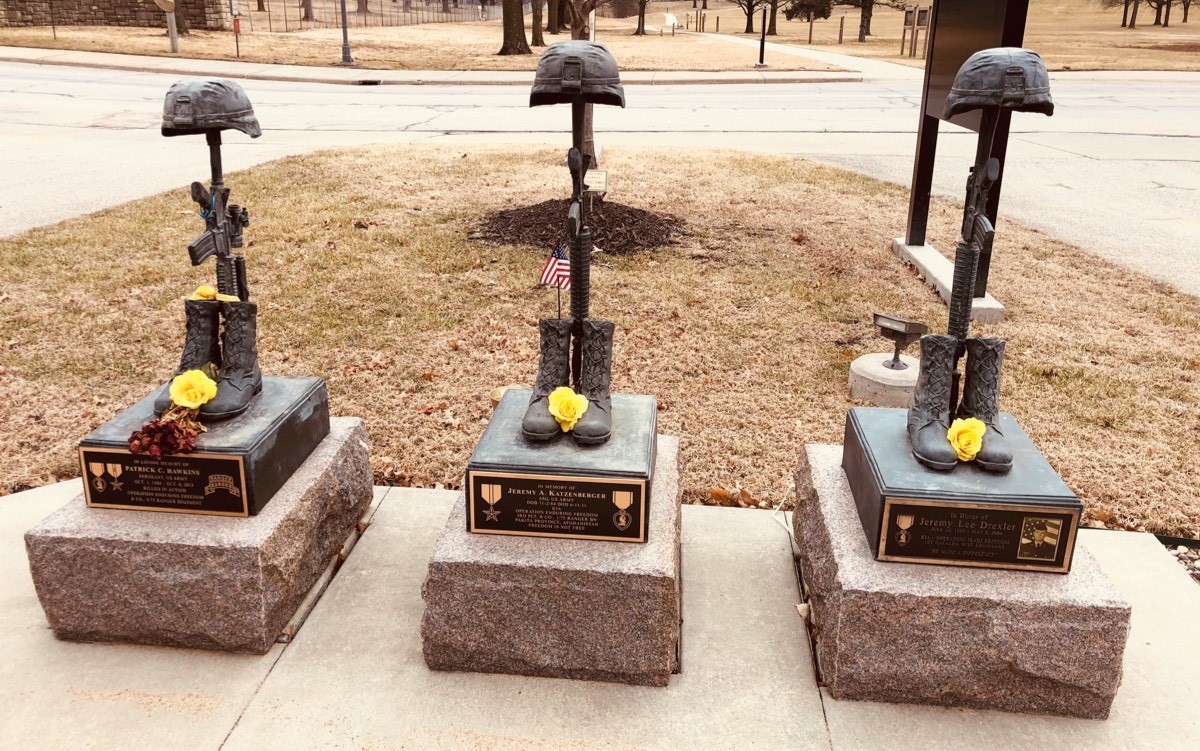
Troy, Kansas, Lincoln, and the Pony Express
Heading north, I passed through Acheson, Kansas. Acheson is a nice town, with several points of interest, including a rail museum. All were closed because of COVID. It had started snowing lightly by this time, so I pressed on north.
I stopped at a highway-side information kiosk at Troy, Kansas and read about Lincoln's visit to the city in 1959. In Lincoln's only visit to Kansas, he spoke in Troy on December 1, giving a speech that reportedly was a trial run of his famous 'Cooper Union" speech that propelled him to the Republican Nomination in 1860.
Text at the Kiosk in Troy

Evidently, Lincoln enjoyed the gingerbread at Troy
Troy was also the first Pony Express Station west of St. Joseph, Missouri. The Pony Express started on April 3, 1860 and ended on November 20, 1861. This site at Troy was not an original station. It was an added station and first used on July 1, 1861. By August 28, 1861 the Pony Express Mail was carried by Stagecoach from St. Joseph to Ft. Kearny and not by the Pony Express Horse. This route stopped being used on September 14, 1861 when the headquarters in St. Joseph was moved to Atchison.
Despite a heavy subsidy, the Pony Express was not a financial success and went bankrupt in 18 months, when faster telegraph service was established.[wikipedia]
The Pony Express operated near Troy for Its short duration
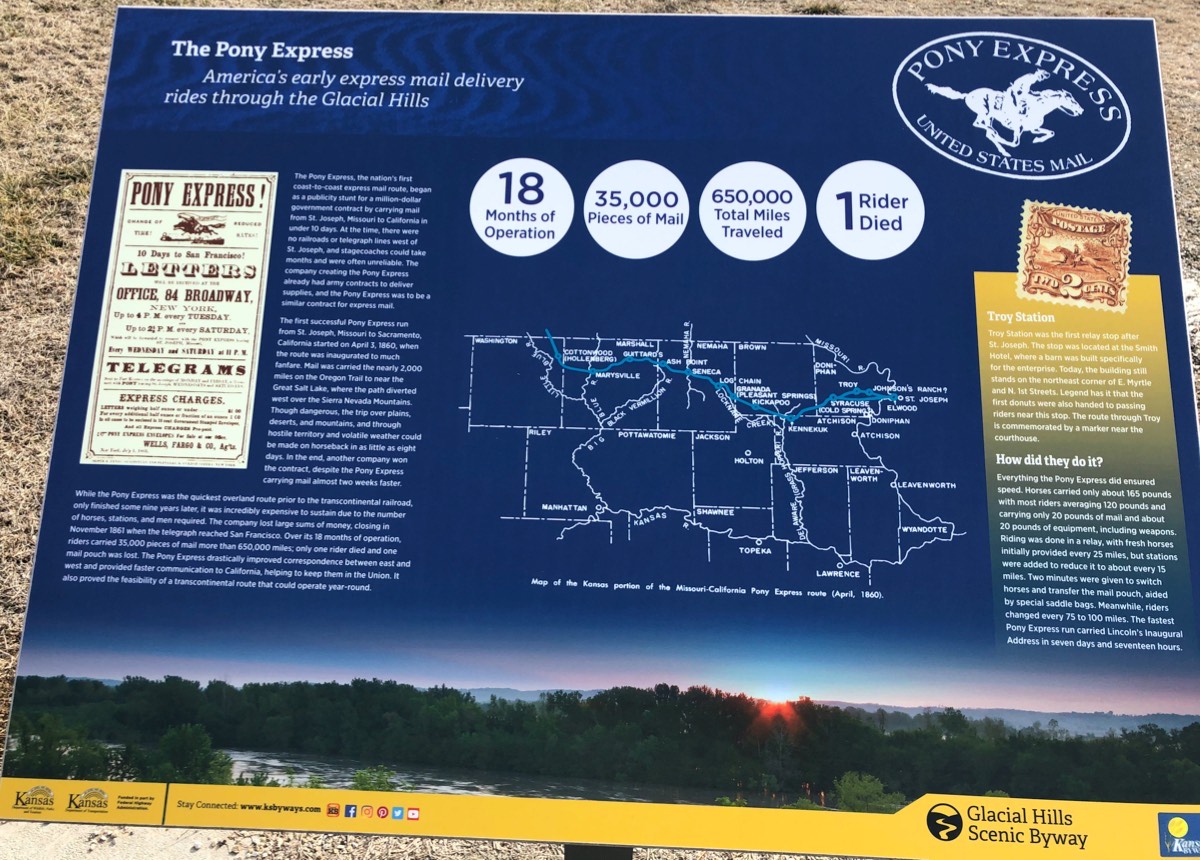
The drive from Troy to White Cloud was pleasant, and I admired the interesting landscapes as I travelled north. The area is gently rolling farmland, punctuated with rounded hills that mark the western alluvial edge of the ancestral Missouri River channel.

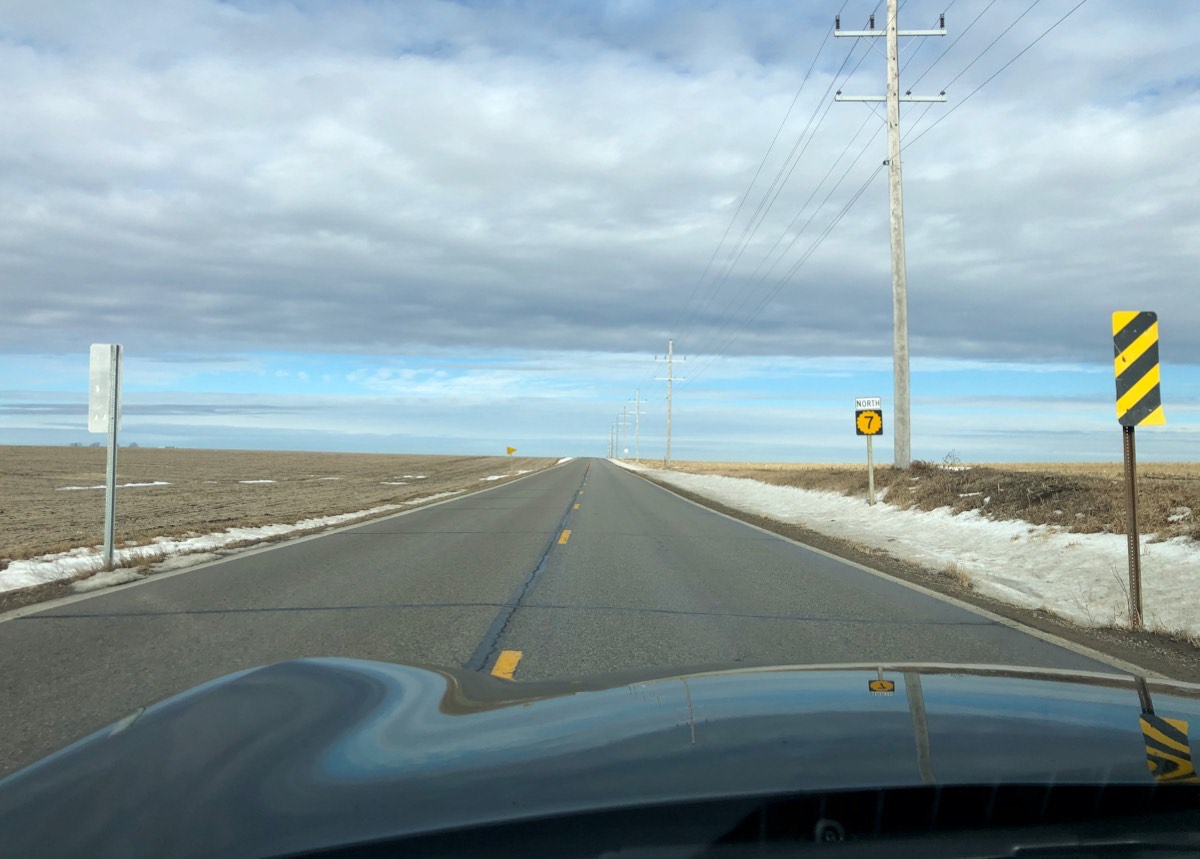
Information on Glaciers from a roadside kiosk

A lonely hillock, rounded by the passage of a receding glacier

White Cloud
My journey ended at White Cloud, and old and once proud city located on the banks of the Missouri River. I must admit that this town looked quite run-down, even though I read that many of the local buildings are listed on the National Register of Historic Places. A claim to fame for Whilte Cloud is that some scenes from the movie Paper Moon were filmed in the city in 1973.
There is an informational kiosk near the Missouri River at White Cloud, describing the activities of Lewis and Clark in this area.
The sign at the boat dock area indicated that dock improvements were sponsored in part by the White Cloud PBSS Flathead Club. Well, I needed to learn more, and a quick search on the google turned up a bit of information. It turns out that Flatheads are giant catfish. And when I say giant, I mean GIANT!!! The record for a Flathead caught in the Missouri River is over 100 lbs!
You can go to the PBSS Flathead Club web site by clicking here
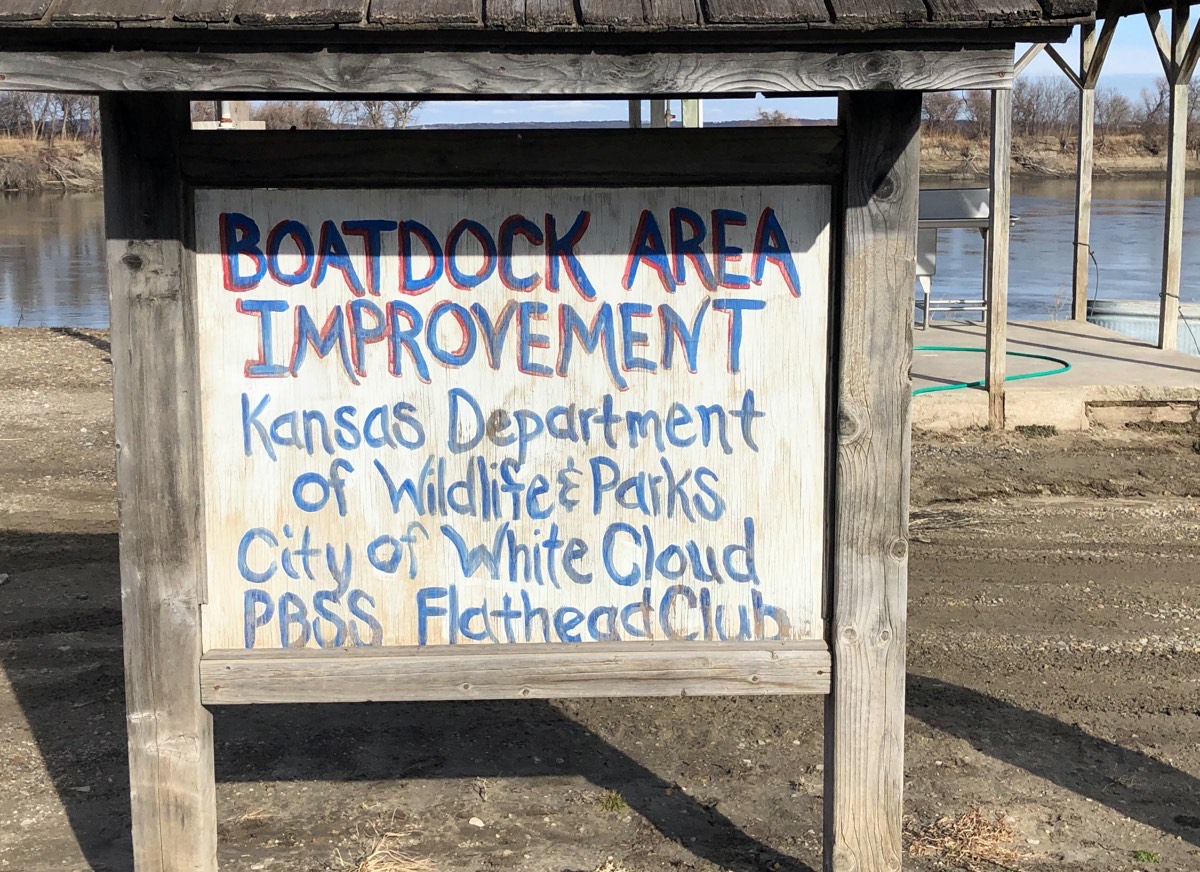
Looking north toward Nebraska on the Missouri River, The state of Missouri is across the river
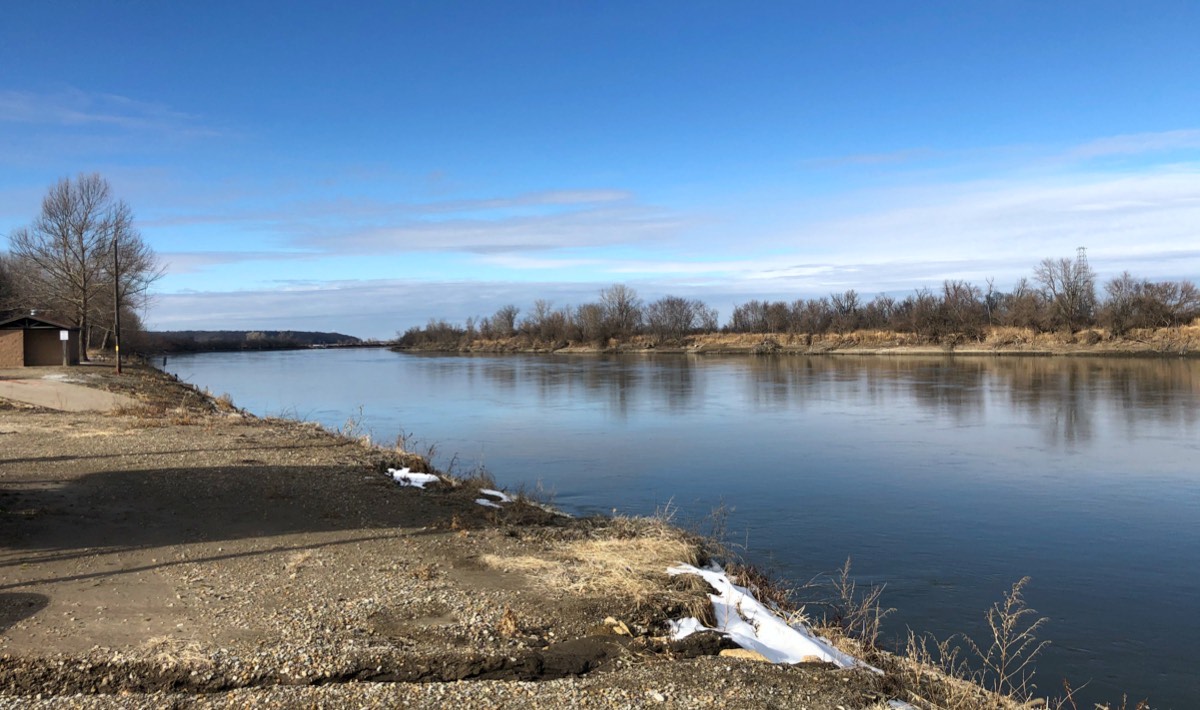
Looking south on the Missouri River. You can see an informational kiosk describing the Lewis and Clark expedition to the right
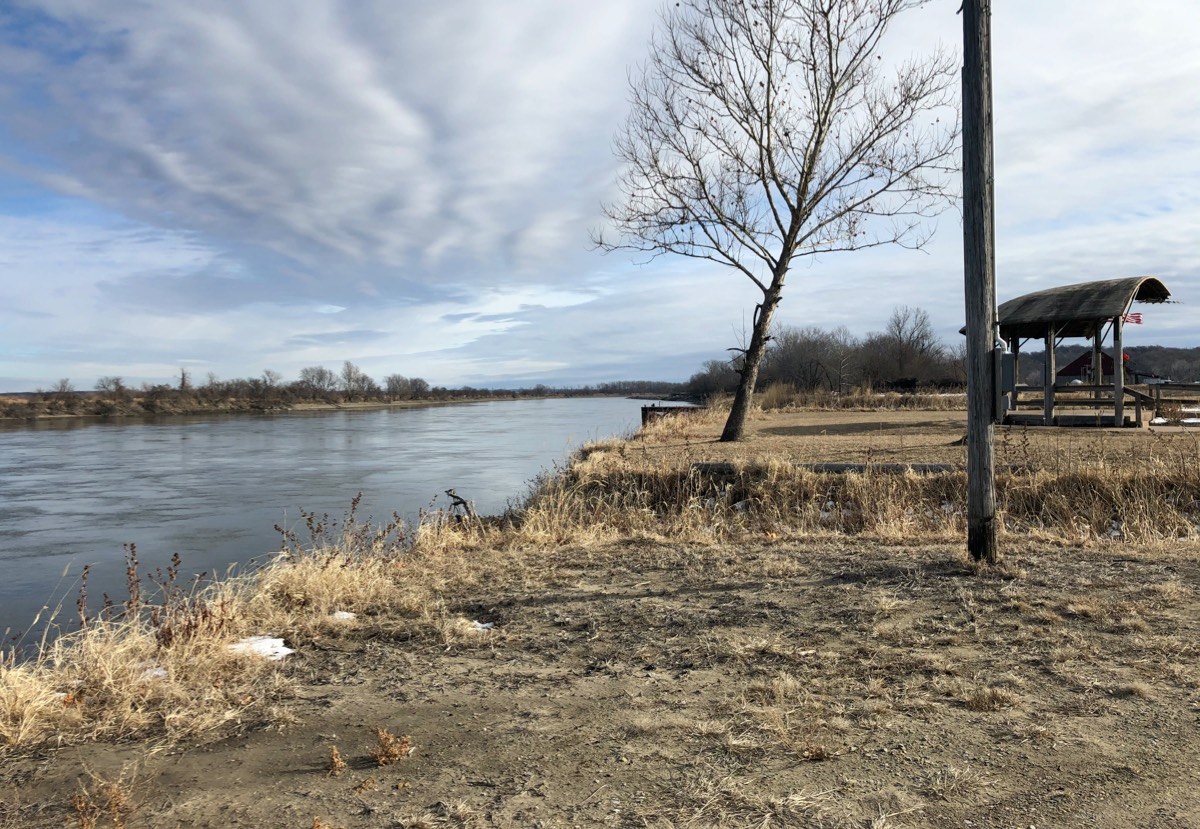
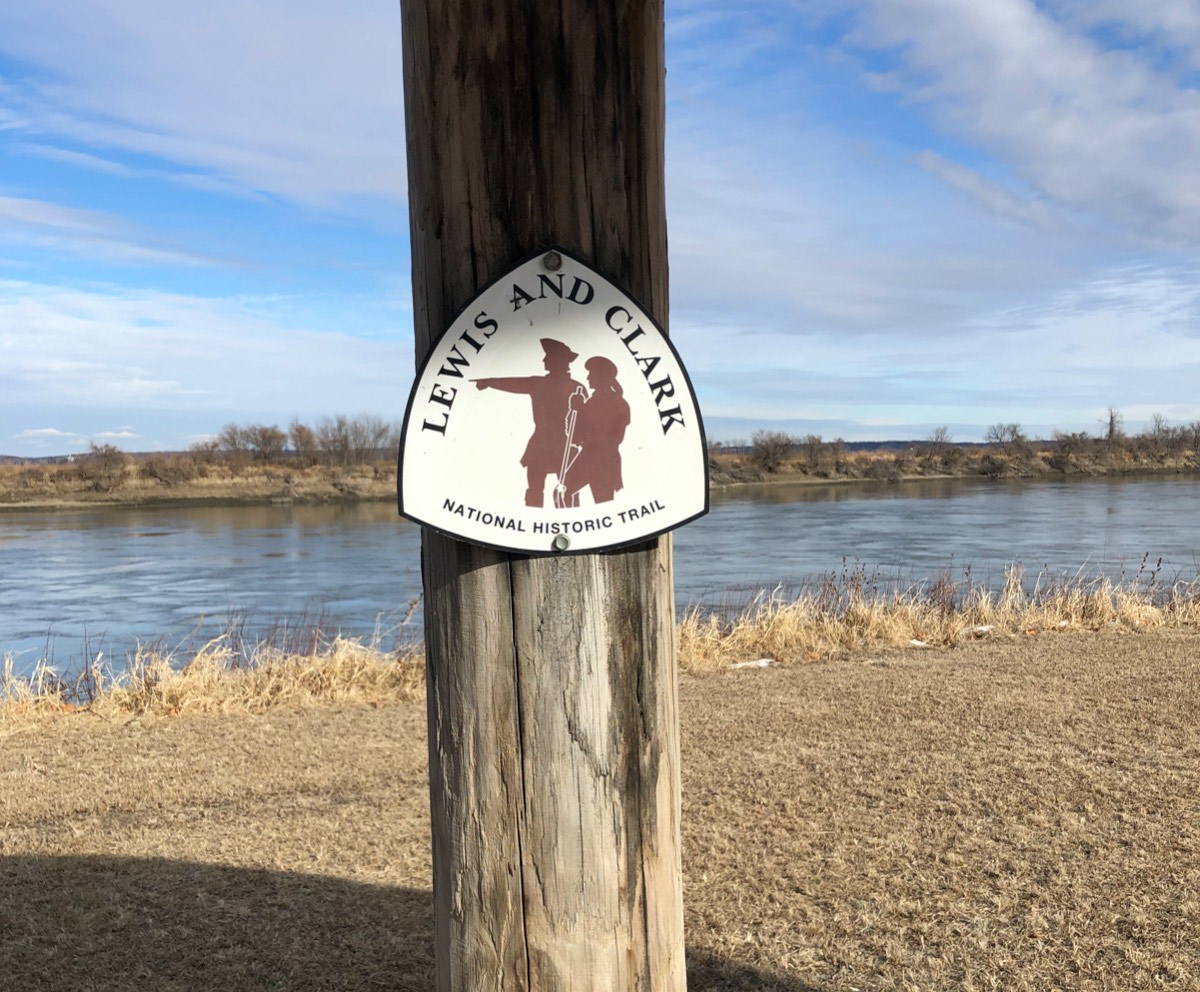
After spending some time at the dock in White Cloud looking for some flathead (I didn't see any), I drove back to Troy, then drove east across the river and to St. Joe. I then roared home on I-29, braving the truck traffic, music blaring all the way home!